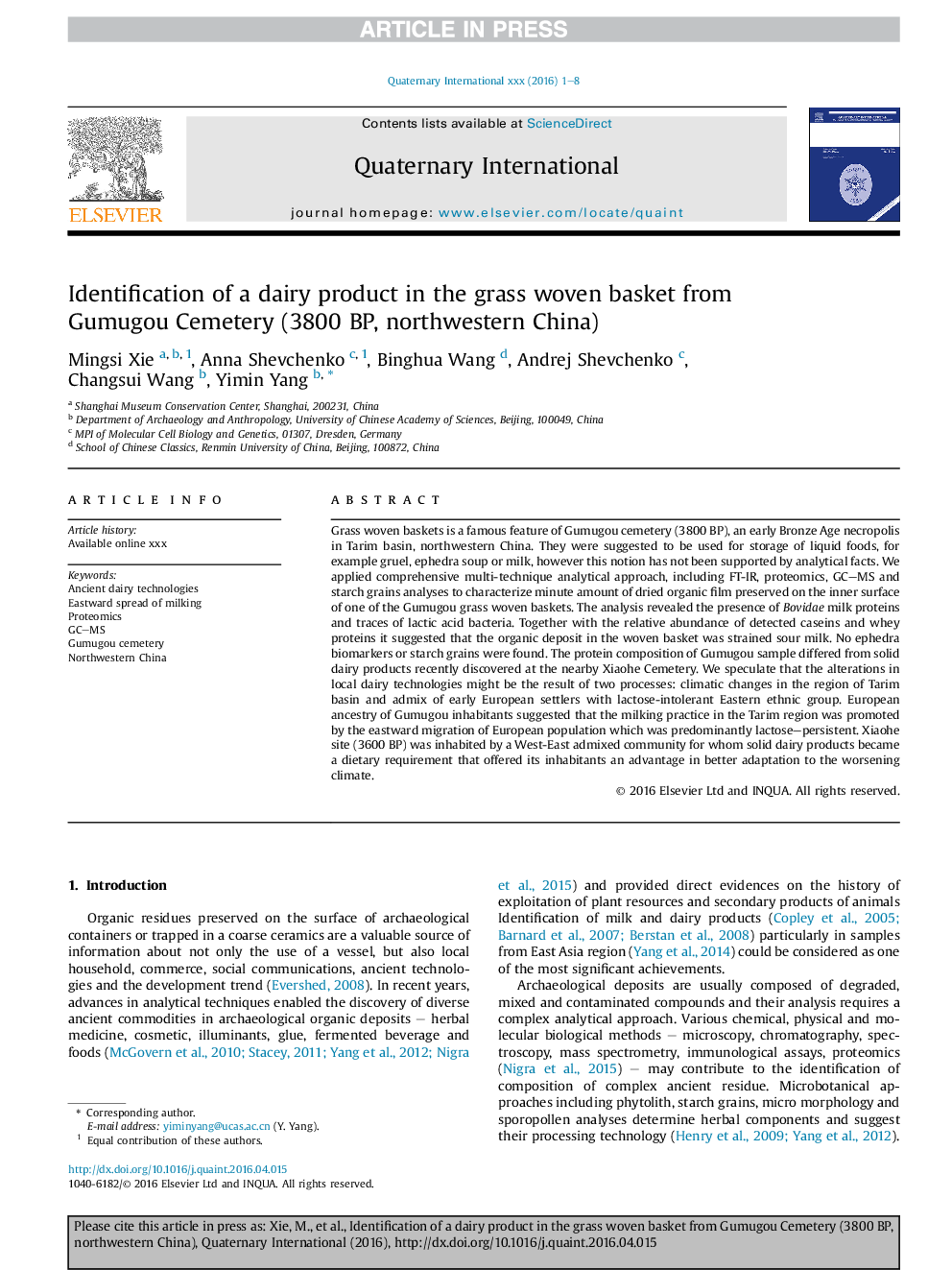| Article ID | Journal | Published Year | Pages | File Type |
|---|---|---|---|---|
| 5114118 | Quaternary International | 2016 | 8 Pages |
Abstract
Grass woven baskets is a famous feature of Gumugou cemetery (3800Â BP), an early Bronze Age necropolis in Tarim basin, northwestern China. They were suggested to be used for storage of liquid foods, for example gruel, ephedra soup or milk, however this notion has not been supported by analytical facts. We applied comprehensive multi-technique analytical approach, including FT-IR, proteomics, GC-MS and starch grains analyses to characterize minute amount of dried organic film preserved on the inner surface of one of the Gumugou grass woven baskets. The analysis revealed the presence of Bovidae milk proteins and traces of lactic acid bacteria. Together with the relative abundance of detected caseins and whey proteins it suggested that the organic deposit in the woven basket was strained sour milk. No ephedra biomarkers or starch grains were found. The protein composition of Gumugou sample differed from solid dairy products recently discovered at the nearby Xiaohe Cemetery. We speculate that the alterations in local dairy technologies might be the result of two processes: climatic changes in the region of Tarim basin and admix of early European settlers with lactose-intolerant Eastern ethnic group. European ancestry of Gumugou inhabitants suggested that the milking practice in the Tarim region was promoted by the eastward migration of European population which was predominantly lactose-persistent. Xiaohe site (3600Â BP) was inhabited by a West-East admixed community for whom solid dairy products became a dietary requirement that offered its inhabitants an advantage in better adaptation to the worsening climate.
Keywords
Related Topics
Physical Sciences and Engineering
Earth and Planetary Sciences
Geology
Authors
Mingsi Xie, Anna Shevchenko, Binghua Wang, Andrej Shevchenko, Changsui Wang, Yimin Yang,
